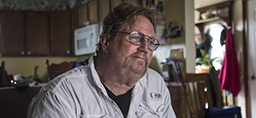
Someone—your neighbor, a family member or a stranger—suffers a head injury every 21 seconds in the U.S.
That statistic may be startling, but it points out an often overlooked issue for people young and old.
“You’ve only got one brain so you have to protect it,” quipped Benjamin Gillespie, DO, physical medicine and rehabilitation specialist with Spectrum Health Medical Group and director of Spectrum Health Center for Acute Rehabilitation. “Because of that, we focus on helping people learn to prevent falls. That is the No. 1 reason for brain injury in the United States.”
Dr. Gillespie points out that more than 40 percent of those brain injuries are caused by falls. Other causes of head injuries include motor vehicle accidents and blunt trauma to the head, either from sports-related activities or acts of violence.
Falls seem to affect the youngest and oldest members of our community more profoundly. Most brain injuries among children are caused by falls and falls are responsible for brain injuries in a staggering 81 percent of people older than 65.
Prevention of these falls is therefore a wise course of action.
Dr. Gillespie suggested the top 5 things we can do to prevent falls:
1. Be proactive
Reach out to your doctor and express concerns if you are having balance issues. Speaking up can help identify underlying signs of disease that can be addressed before a fall results. Also note when a medication seems to affect your balance and alert your physician immediately.
2. Get a vision screening
Simple vision issues often cause people to trip and fall. Schedule an eye exam and follow the optometrist’s advice for corrective lenses.
3. Exercise the core
Getting fit and improving your core strength improves your ability to maintain balance and offset a fall. Seek the advice of an exercise specialist.
4. Get your home assessed
Invite an occupational therapist to your home to help identify things that you can easily change to prevent falls in your environment. For example, adding adhesive to the back of a kitchen throw rug can be the difference between warm toes on a cold morning and spending months in rehabilitation from a slip and fall that results in brain injury.
5. Pay attention to your surroundings
It seems like second nature to most people to click their seat belt and wear a helmet while riding a bike (either motorized or pedal powered), but these things bear repeating. Also, exercise caution when wearing headphones while walking or running as you won’t be as aware of your surroundings and potential risks of falling or being hit by a motorist, biker, or other person.
Dr. Gillespie also invites you to discuss fall prevention with your physician.
“Maybe we’ll find things that you don’t know are going on,” he said. “It doesn’t take long, but it could have an impact on your health for years to come.”
 /a>
/a>
 /a>
/a>
 /a>
/a>